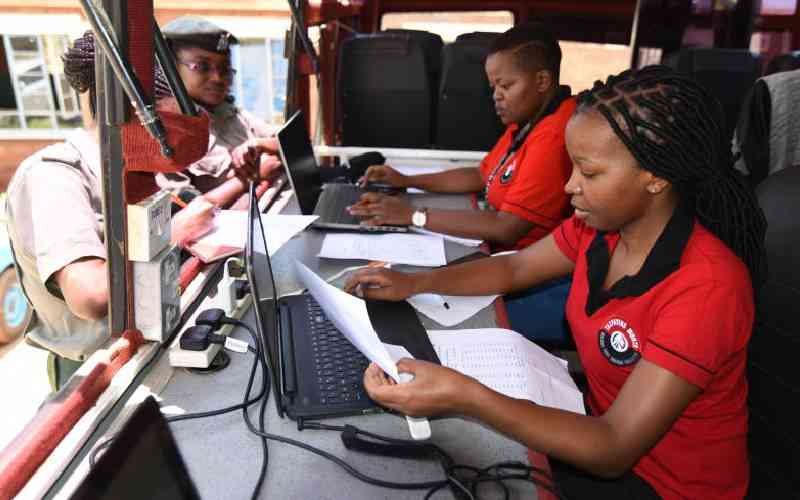Kenyan taxpayers have lost billions of shillings in the government’s Managed Equipment Services (MES) programme, a new report has shown.
The MES programme was introduced in 2015 as a means of providing crucial infrastructures, such as dialysis machines and MRI scanners, to two hospitals per county and four national referral hospitals.
The Institute of Economic Affairs-Kenya (IEA) says the MES project, which involves large medical equipment manufacturers like General Electric, Esteem Industries Inc and Phillips, did not realise value for money for Kenyans, leaving county governments tied up in opaque, multi-billion-shilling contracts.
According to the institute’s value for money assessment on MES, secret contracts signed between the central government and manufacturers further exposed the project to corruption and wastage of public resources.
“There has been no clear information forthcoming about the MES leasing programme in terms of the value and scope of the contracts,” said John Mutua, a policy official at IEA.
“The cost of the project has moved from Sh38 billion to Sh68 billion, but there was no clear explanation or justification given for this cost variation.”
Some of the contracts signed with leading equipment manufacturers are General Electric at Sh23.8 billion; Phillips Medical Systems at Sh3.6 billion, Bellco SRL at Sh2.3 billion, Esteem Industries Inc at Sh8.8 billion, Shenchen Mindary Bio Medical Ltd at Sh4.5 billion and Sysmex Europe GMBH at Sh2.9 billion.
In 2017, however, the Council of Governors protested what it termed coercion from the national government to participate in the programme, despite inadequate information provided.
County officials and the central government reportedly signed a three-page memorandum of understanding (MoU) that was inadequate for a project of its magnitude.
“The project was to lease equipment that have a long service period and are capital intensive to procure, but we have cases where counties were leasing scissors and gloves,” said Kwame Owino, IEA’s chief executive.
Gathering dust
In other cases, the equipment is said to be gathering dust in county warehouses because of a lack of basic infrastructure like electricity and specialised personnel to operate and maintain them.
Besides violation of financial laws and procurement processes, the project adopted a one-shoe-fits-all approach despite variations in healthcare infrastructure needs between counties. The value assessment report from IEA on the programme also looked at queries flagged by the Office of the Auditor-General.
According to the Auditor General, Sh12.7 billion spent under the programme in the 2017/18 financial year by seven counties was unsupported against provisions in the Public Finance Management Act, 2013.
The seven counties are Nakuru (Sh4.6 billion), Uasin Gishu (Sh1.8 billion), Nandi (Sh1.4 billion), Nyamira (Sh1.4 billion), Siaya (Sh1.3 billion), West Pokot (Sh1.2 billion) and Vihiga (Sh0.9 billion).
“It also remains unclear what will happen at the end of the leasing period, whether the equipment will belong to the counties or if it will mark the beginning of another leasing period and county health officials are in the dark on this,” said Mr Owino.
According to Edwin Kamar, an official from the office of the Auditor General, access to the contracts signed between the government and medical suppliers have been kept secret.
“The law is clear that the Auditor General’s office should have unlimited access to information, but sometimes you have that limitation of scope,” he said.
“Public participation is also an issue where the counties were not given an option on, whether to pay the lease or not, and the deduction is done upfront at the National Treasury.”
Last year the National Assembly and Senate kicked off a fresh probe into the project, with a report expected in the coming weeks.
 The Standard Group Plc is a multi-media organization with investments in media
platforms spanning newspaper print operations, television, radio broadcasting,
digital and online services. The Standard Group is recognized as a leading
multi-media house in Kenya with a key influence in matters of national and
international interest.
The Standard Group Plc is a multi-media organization with investments in media
platforms spanning newspaper print operations, television, radio broadcasting,
digital and online services. The Standard Group is recognized as a leading
multi-media house in Kenya with a key influence in matters of national and
international interest.
 The Standard Group Plc is a multi-media organization with investments in media
platforms spanning newspaper print operations, television, radio broadcasting,
digital and online services. The Standard Group is recognized as a leading
multi-media house in Kenya with a key influence in matters of national and
international interest.
The Standard Group Plc is a multi-media organization with investments in media
platforms spanning newspaper print operations, television, radio broadcasting,
digital and online services. The Standard Group is recognized as a leading
multi-media house in Kenya with a key influence in matters of national and
international interest.









